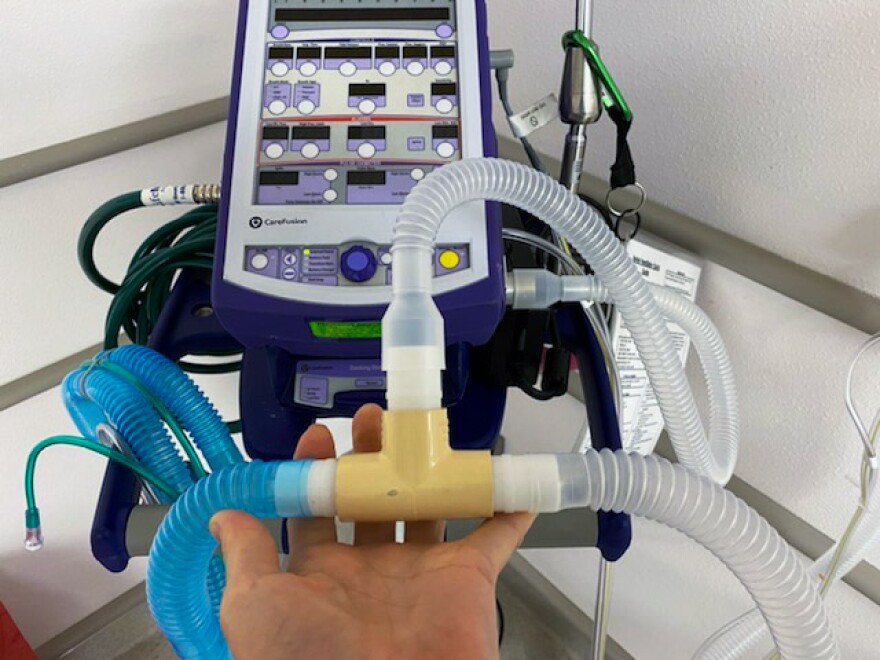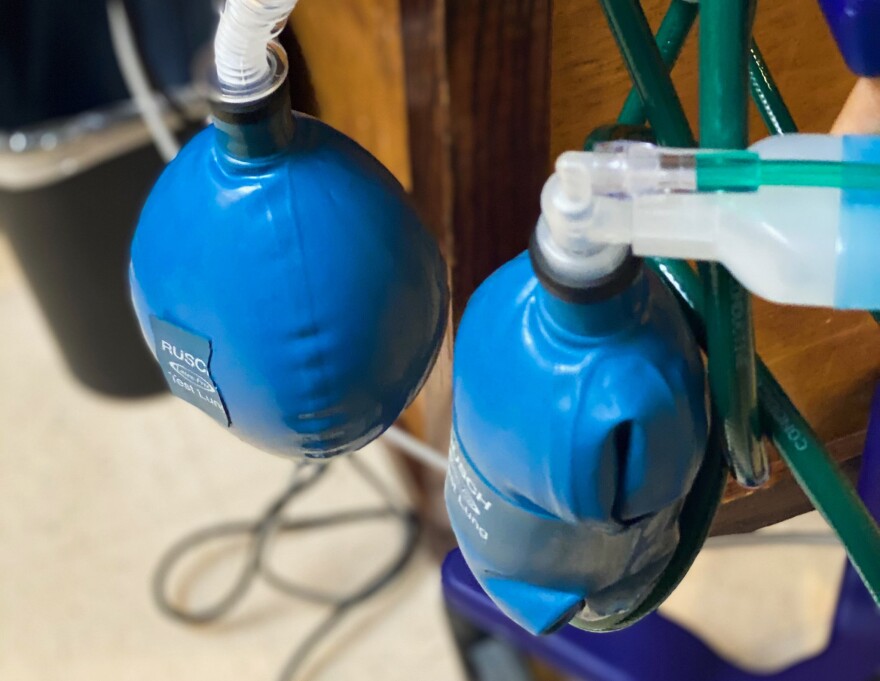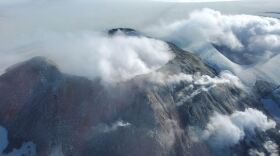Unalaska is the largest community in the state without a critical access hospital, with a population of 4,500 year-round residents that more than doubles during peak fishing seasons.
Early on in the COVID-19 pandemic, medical workers and politicians were unsure how bad the pandemic would get. And concern over the availability of ventilators — machines that help a patient breathe or breathe for them — intensified.
In Unalaska, there are three ventilators at the community's clinic, and Anchorage's hospital is a three-hour medevac flight away.
As of Thursday, the island has seen 103 cases of the coronavirus, all of which are travel-related, according to the city. And as the island anticipates the arrival of community spread, Sarah Spelsberg, a physician assistant at Iliuliuk Family and Health Services, has developed a way to double the island's ventilator capacity through ventilator splitting.
"As I started getting horror stories from my friends [in the medical field], I started panicking a little bit about what are we going to do here if our plan doesn't work? And if [COVID-19] comes here, and we get a lot of really sick people? What if [we end up like] New York? What are we going to do?" said Spelsberg, as two sets of blue-colored plastic lungs filled with air on a ventilator machine standing next to her at Unalaska's clinic. "And so I just started reading everything I could find and playing with T-adapters and PVC pipe until I was able to make it work."
Early on in the pandemic, many medical professionals were saying patients with COVID-19 needed to be put on a ventilator immediately, said Spelsberg. And it seemed like Unalaska, being such a busy fishing port with a highly transient population, would face a shortage of the critical breathing machines, with only three ventilators on the island — four, if the LifeMed airplane is in town.
Spelsberg, who has worked in emergency and wilderness medicine since 1996, decided to take matters into her own hands. She started reading about vent splitting, buying PVC pipe and glue at Alaska Ship Supply to make a prototype, and even reached out to Dr. Lorenzo Paladino, the emergency medicine physician she calls "the Godfather of vent splitting." Paladino is one of the authors of the 2008 sheep study in which he and several colleagues kept four adult sheep alive on a single ventilator for 12 hours.
"He responded from New York, from the middle of the pandemic, in one of the busiest ERs," Spelsberg said. "And he responded with 'Wow, we're lucky that we actually haven't had to split vents yet. Anyone who's needed a vent has gotten a vent. But, man, if anyone's going to have to do it, it's going to be you guys.'"

The ventilator splitters make it possible to fill two sets of lungs from each machine, which typically only supports one person. Spelsberg said similar-sized people with similar lung capacity can be hooked up on each side, and it delivers each of them the same amount of air pressure.
While the island has yet to see its first case of community spread, Spelsberg said she hopes the clinic never has to use the equipment, but is grateful they're prepared.
"This could have been so much worse, so much faster for us," she said. "And because everybody's working together as a team, we're doing okay. I feel like we might be New Zealand, and we might be able to catch everything and contain it. That would just be amazing, if we could do that."
Between the city's COVID-19 task force, it's quarantine and testing plan, prepared clinic staff, and the island's seafood processing plants implementing and sticking to strict mitigation strategies, according to Spelsberg, the community is as prepared as it can be.
"My friends have always marveled at me that I'm not afraid of anything," said Spelsberg. "I climb high things. I'm the person who repels 900 feet down to the car crash. I'll catch the spider for you. I'll catch the roach for you. People ask, 'What are you afraid of?' And I have always answered, for my entire adult life, 'A viral pandemic.' The scariest movie I ever saw was Contagion. Because I was like, 'Yep, that could happen. And I don't know what we would do.' And it's here. So my job is to try to figure out what's the worst case scenario and prevent that, and try to keep as many people safe as possible, and to preserve as much life as possible. From the get go of this, I just started reading everything, I talked to every expert I know, I built what I thought we would need, and I just tried to be ready. And I do feel like for what we are, and where we are, we're as ready as we can be."
After a hard year in the community — between a fatal plane crash, the loss of multiple young people, natural disasters, and now a global pandemic — Spelsberg said she's proud of the teamwork that went into splitting the ventilators and preparing for the worst.
"It's been a crazy year," she said. "But I feel like it has also shown how amazing the Unalaska Fire Department is, and how quickly they respond, and how well we all work together. They roll into the clinic with a patient, and in any other facility, the paramedics are like, 'Alright, bye,' and they roll out the door. Here they stay: One of them's manning the phones, one of them's helping us write stuff down, and another one's starting a second IV. I feel like, as awful as it has been — and if I had a magic wand, I would erase all of it, but I can't do that — so looking at the silver lining of it, it really has given people an opportunity to show us how amazing they are."
Spelsberg said her work has been a complete "MacGyver situation," making the ventilator splitters from an extremely durable plastic, hand shaped on a lathe by local Steve Vandeventer, who works for the city's Vehicle Maintenance Division.
Vandeventer said the clinic first tried to make the ventilator splitter parts on a 3D printer that belongs to the city. But they were unable to achieve the correct taper needed to secure the parts to the machine's tubing. That's when Vandeventer was asked to make the pieces on his lathe.
"We make things work," he said. "And it's not just me. The whole city does this. If something comes up and it isn't available, or we can't find it, we make it or we make it work — one of the two. We don't say 'No, I don't have the part, I can't do it.' We come up with a way to do it. We will do it. We have to do it."
Spelsberg also made an intubation tent out of clear plastic that came wrapped around giant canvases she ordered to paint a gift for a friend.






